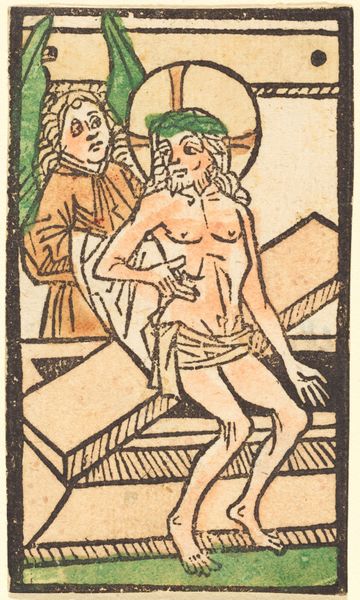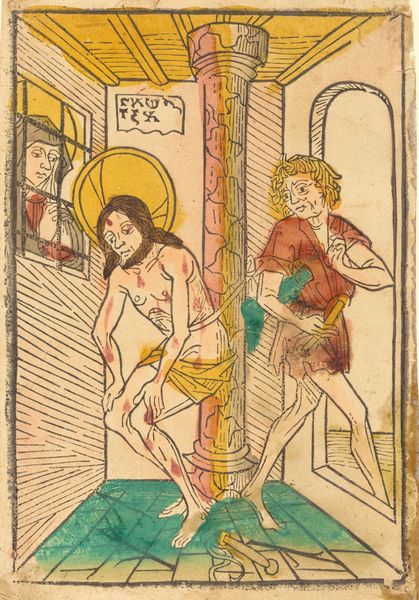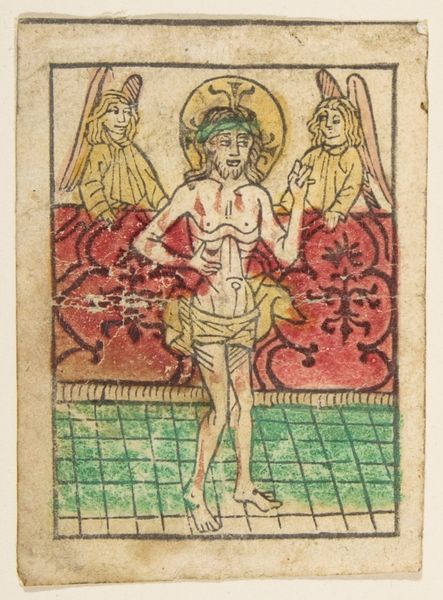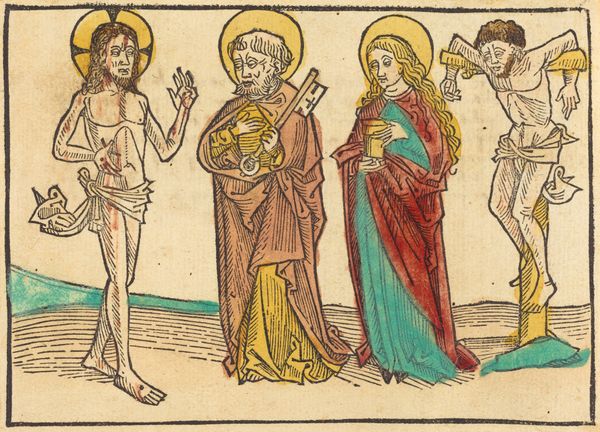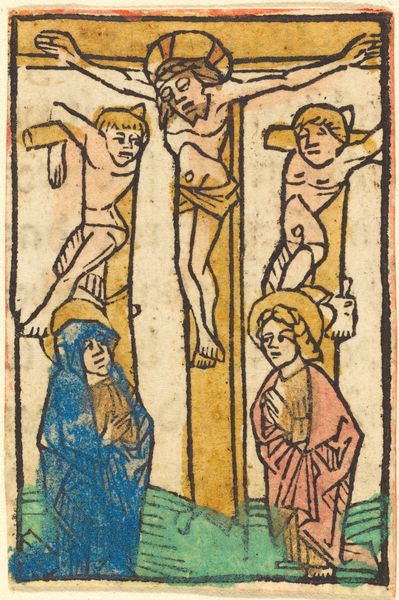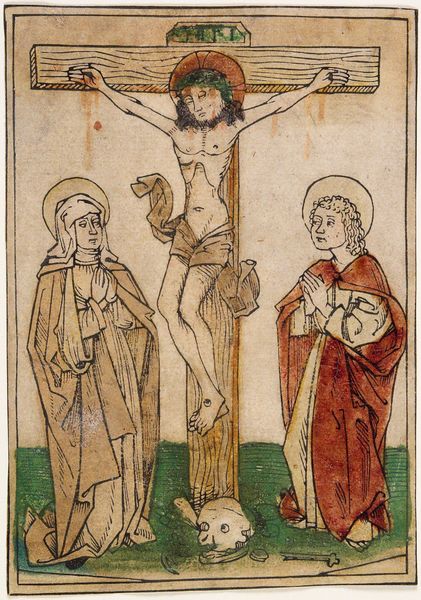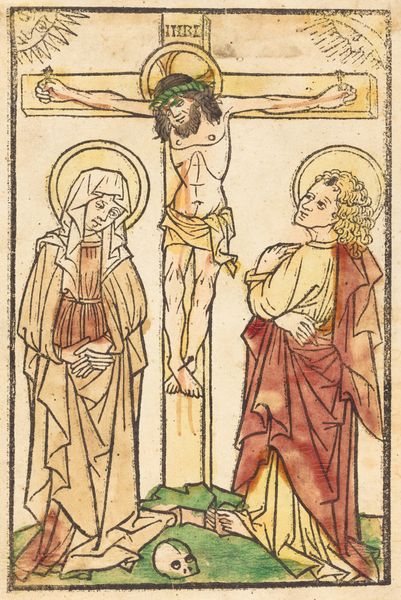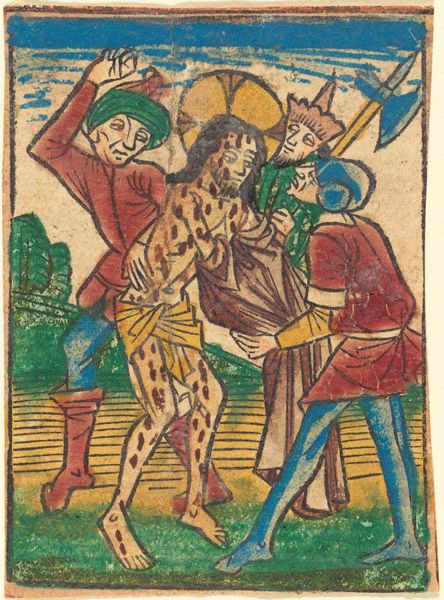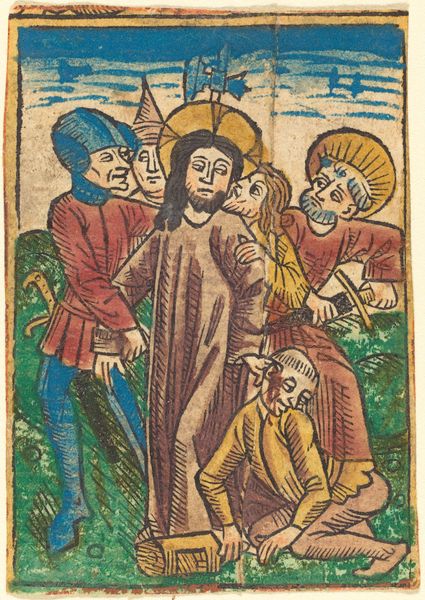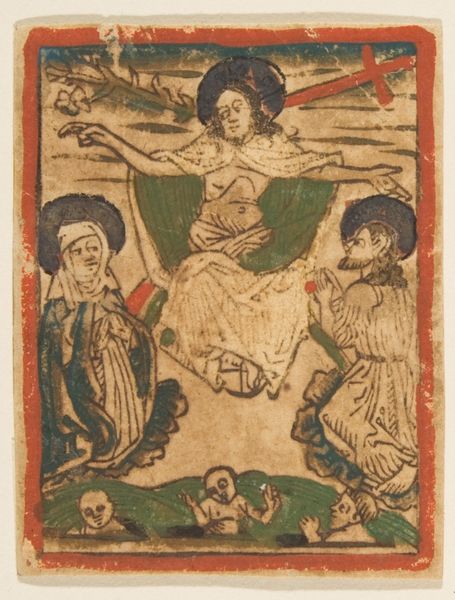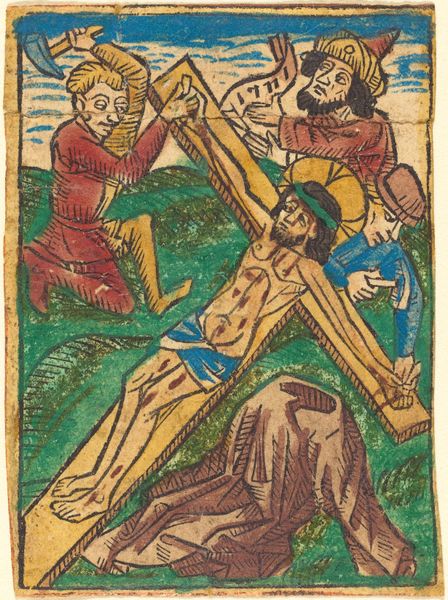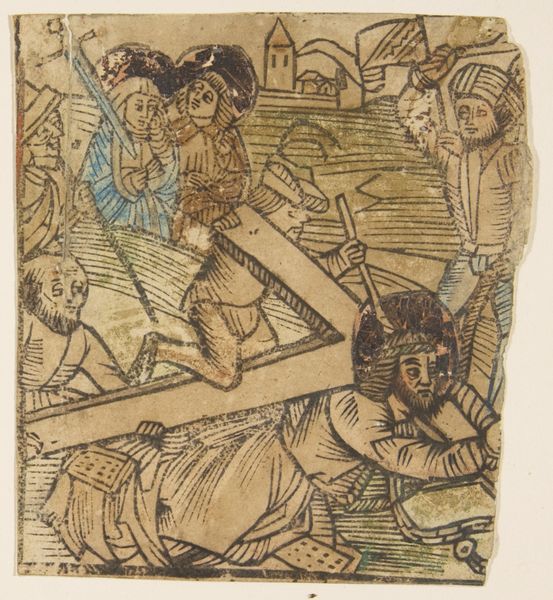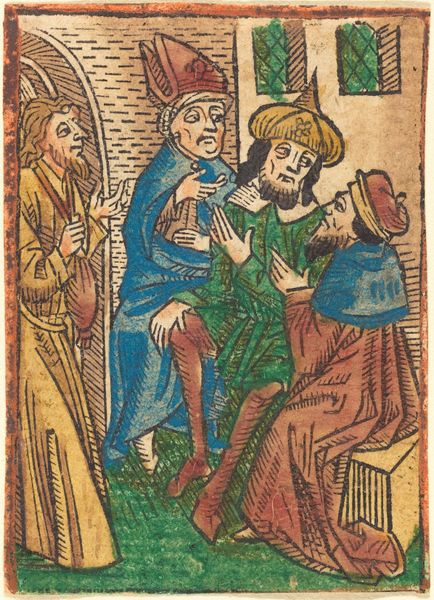
drawing, print, woodcut
#
drawing
#
medieval
#
narrative-art
# print
#
figuration
#
woodcut
#
history-painting
#
christ
Dimensions: sheet: 4 1/4 x 3 11/16 in. (10.8 x 9.4 cm)
Copyright: Public Domain
Curator: This artwork, a 15th-century woodcut called "The Flagellation," is held here at the Metropolitan Museum of Art. Editor: Gosh, the scene is immediately brutal. You can almost feel the sting of those lashes. It’s sparse, yet filled with kinetic energy. Curator: The dynamism stems in part from the stark contrasts in the image and the active diagonals formed by the figures' limbs and instruments of torture. Note the restricted color palette—primarily earthy tones—that enhances the print’s somber, almost grim atmosphere. The composition invites careful consideration of each figure's relation to the central, passive Christ. Editor: Right, it’s all orchestrated to bring your eye right to Christ's suffering, though the rendering of those torturers—the guy with the mallet, for example—is fascinating. There's a grotesque, almost cartoonish quality to their faces that makes it even more unsettling. What strikes you most structurally, if I may ask? Curator: Structurally, I am drawn to the masterful use of line. The artist achieves depth and texture solely through varied line weights and densities—remarkable given the limitations of the woodcut technique. Furthermore, the placement of Christ centrally—bound yet luminous—against the shadowed forms of his tormentors is a compelling exercise in visual rhetoric. His halo is a very strong geometric feature as well. Editor: Absolutely, the halo and posture juxtapose against the violence to establish this spiritual dominance amid physical pain. This crude beauty reminds us that art, even when raw, delivers meaning beyond mere representation. Looking closely has made me reflect on humanity itself! Curator: Indeed. Examining "The Flagellation" allows us to deconstruct not just its form and composition but also to confront the enduring power of visual narratives across time and cultures. Editor: For me, seeing it triggers something ancient and visceral; what it depicts lingers even after you walk away.
Comments
No comments
Be the first to comment and join the conversation on the ultimate creative platform.

